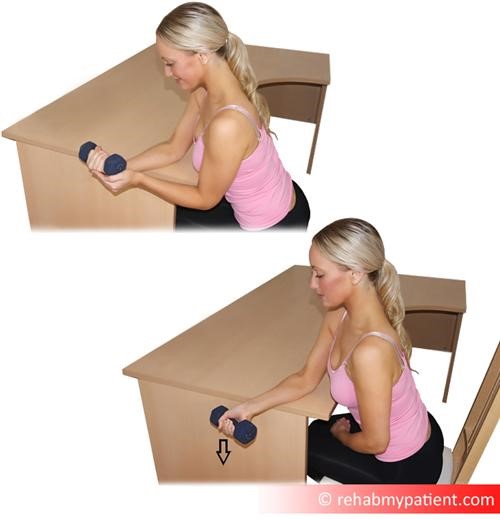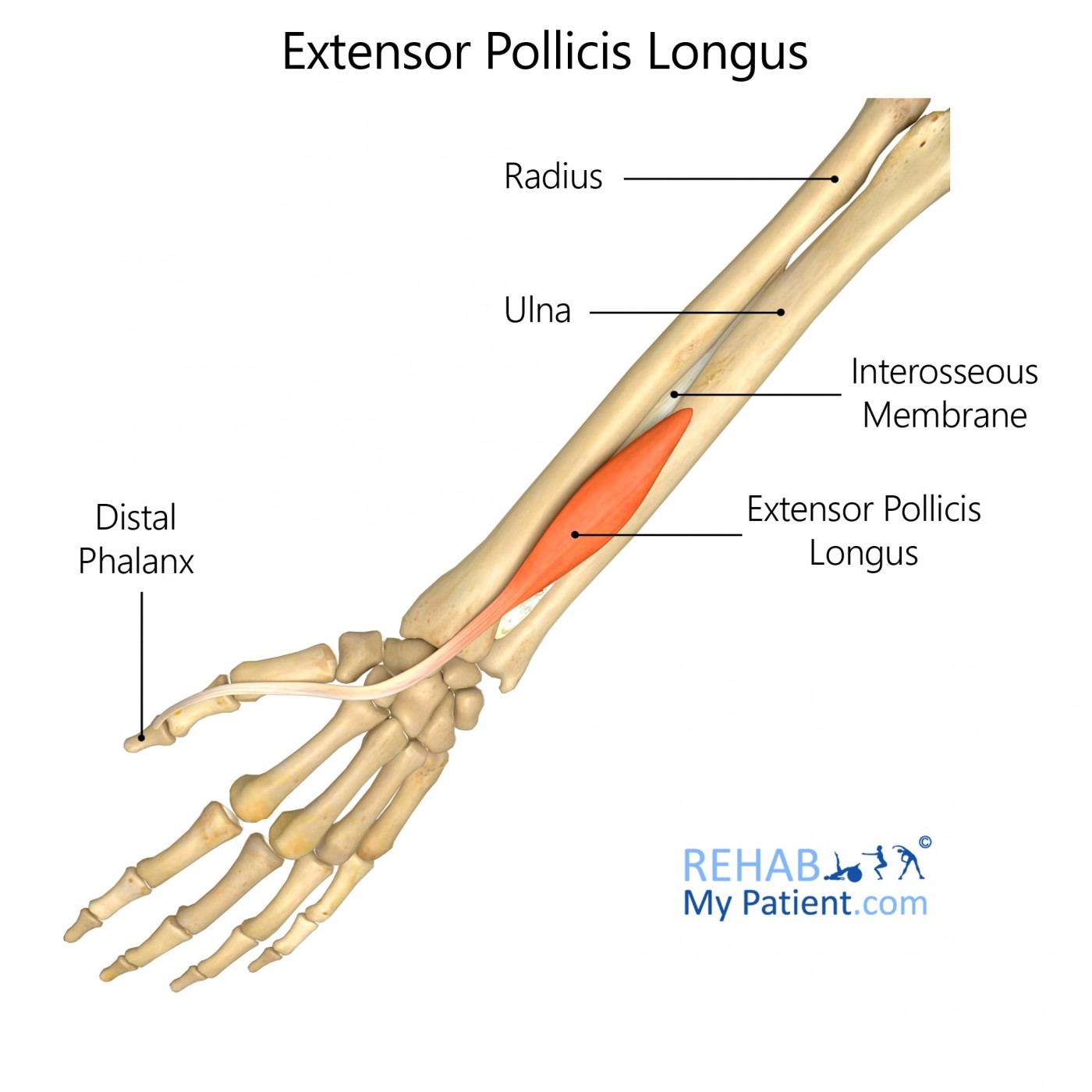
General information
The extensor pollicis longus serves to extend the thumb phalanx. The abductor pollicis brevis and adductor pollicis are both attached to the extensor pollicis longus tendon and can extend the interphalangeal joint of the thumb into a neutral position; however, only the extensor pollicis longus is able to completely hyperextend the interphalangeal joint.
Literal meaning
Long extender of the thumb.
Interesting information
The extensor pollicis longus crosses the radial artery with the extensor pollicis brevis and abductor pollicis longus tendons.
The extensor pollicis longus constitutes the posterior border of the region of the hand known as the anatomical snuff box, which is the triangular indentation in the radial-dorsal aspect. The name ‘anatomical snuff box’ originates from its traditional use for the pouring and sniffing of powdered tobacco - or ‘snuff’ - because of its flat surface.
Origin
The middle of the posterior surface of the ulna, interosseous membrane.
Insertion
Thumb and distal phalanx.
Function
Extension of the thumb.
Nerve supply
Posterior interosseous nerve (coming from the radial nerve).
Blood supply
The extensor pollicis longus receives its blood supply from various different arteries. Before entering the synovial sheath, the extensor pollicis longus receives blood from the anterior interosseous artery. The synovial sheath is then supplied with blood from the posterior ramus of the same artery.
The radial artery provides blood to the metacarpal region of the extensor pollicis longus, and the dorsal metacarpal artery provides blood at the phalanges, where the tendon forms a dorsal aponeurosis.
Relevant research
In a 1972 study, repair of the extensor pollicis longus tendon using the extensor pollicis brevis was shown to be effective in the context of patients suffering from rheumatoid arthritis.
S Harrison, A J Swannell, et al., Repair of extensor pollicis longus using extensor pollicis brevis in rheumatoid arthritis, Ann Rheum Dis. 1972 November; 31(6): 490–492
Extensor pollicis longus exercises
Wrist hyperextension
Begin by selecting a light dumbbell or wrist weight (those with rehabilitative issues may wish to start with empty hands).
In a seated position with the underside of the forearm resting on your thigh and knee region, let the hand hang over the edge of your knee.
To perform the exercise, form a loosely-clenched fist with your hand and pull your fist up and back towards your forearm.
Perform 15-20 repetitions on each hand and repeat the exercise for 2-3 sets.

Wrist abduction
Begin by selecting light dumbbells or wrist weights (those with rehabilitative issues may wish to start with empty hands).
In a standing position, form loosely-clenched fists with your hands and hold them out in front of your body, as if gripping the steering wheel of a car. The thumb-side of your hands should be facing upwards.
To perform the exercise, pull the thumb-side of your hand up and towards the body.
Perform 15-20 repetitions on each hand and repeat the exercise for 2-3 sets.
Reference
Strong (1964), An Electromyographic Study of the Extensor Pollicis Longus and Intrinsic Muscles of the Thumb in Interphalangeal Joint Extension.
Sign Up
Sign up for your free trial now!
Get started with Rehab My Patient today and revolutionize your exercise prescription process for effective rehabilitation.
Start Your 14-Day Free Trial
